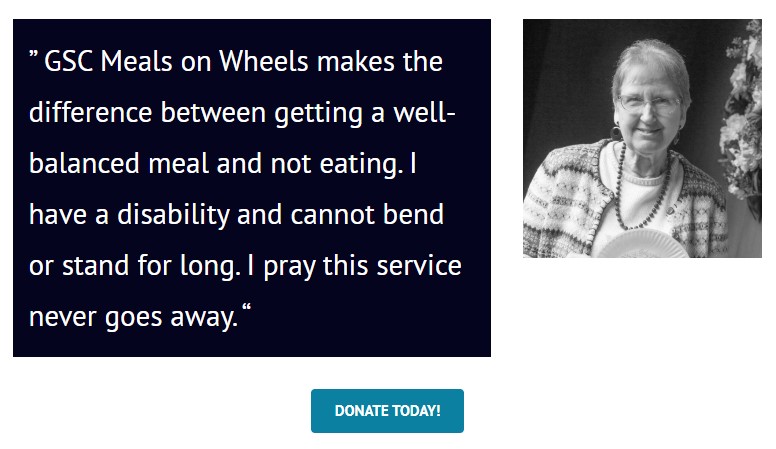What a year this month has been!
All joking aside, things feel pretty overwhelming right now. The COVID-19 situation is causing a lot of upheaval, and nonprofits are busy working to adapt their fundraising strategies accordingly. Since we just published our Generational Giving Report, I wanted to give you a quick breakdown of how you can apply the study’s findings to your emergency fundraising campaigns.
I’ll take you through each generation’s preferences around donating and communication. I’ll also give you some pointers on how to approach each generation with today’s current events in mind.
A quick note, though: while the coronavirus pandemic is anything but “business as usual,” it’s important to remember that the rules of effective, responsible fundraising are the same. Donors still want to know that they’re making a difference, they still want to be thanked and appreciated for their donation, and they should be treated as the heroes of the story you’re telling. The circumstances of your campaign are unusual, but those best practices are still important!
With that in mind, let’s dig into some strategies you can use to appeal to your donors. Ready? Let’s go.
First, let’s look at Baby Boomers’ preferences

Establish trust
The one theme I saw over and over again in our Baby Boomer respondents is that they’re very motivated by knowing their money will be used wisely. If you’re making an appeal to your Boomer donors, include language around how you’ll use the money they donate. Whenever possible, reinforce their decision to give by including trust indicators or testimonials. Trust indicators can include badges from GuideStar or Charity Navigator, or you could try including things like visual breakdowns of how money is spent at your organization. Adding testimonials from others who are happy about supporting your organization is also a good way to show your Boomer donors that you’re trustworthy and use the money you raise responsibly.

Boomers are also very generous when they receive urgent appeals. Almost a third of donors from this age group indicated that they’re primarily motivated by urgent appeals from nonprofits.
Have a plan for processing checks
When you’re making appeals to Baby Boomers, they are probably going to want to support you by sending you a physical check. Baby Boomers are the generation most likely to respond to a direct mail appeal, and 43% of the Baby Boomer donors who replied to our survey indicated that sending a check through the mail is their preferred donation method. Give those donors a physical address to which they can mail their donations. If you’re practicing social distancing or are working from home, have a plan in place for retrieving and processing those checks.
The next largest group of Boomer respondents—24% of them—said they’d prefer to give in person or over the phone. If you’re trying to minimize person-to-person contact, we recommend you not take in-person checks or cash donations. Instead, include a phone number in your appeal that donors can call to make a gift. If you’re working remotely, be sure someone is responsible for answering that phone.

Include these assets in your campaign:
- Direct mail appeal
- Trust indicators on your appeal and accompanying remit slip
- Trust indicators on your online donation form
- Plan for processing checks
- Phone number donors can call to make a gift
Here’s how to appeal to Generation X

Build word of mouth referrals
When we asked Generation X donors what inspired them to give to a nonprofit, the largest group (35% of them) said they were most frequently inspired to give after hearing about the nonprofit from friends or family. The next largest group (32%) indicated that they were most frequently moved by urgent appeals for funding.
When you’re building your emergency fundraising campaign, encourage your donors and other supporters to share your fundraiser with their friends and family. There are a ton of ways to get this going. You could try:
- Posting a status to Facebook explaining why you’re raising money and asking people to share your post
- Adding a note to your donation confirmation page explaining that donors can make an even bigger impact by sharing your donation form and a story about why they think it’s important
- Reaching out to your board, volunteers, and other nonprofit advocates and asking them to help you spread the word about your campaign
Make the biggest impact by reiterating why you’re running this campaign. Remember, Generation X donors respond well to urgent appeals!
Keep your digital presence updated
When asked what would discourage them from making a gift, 33% of Generation X respondents indicated that they’re put off by an outdated website. Give your website a quick makeover that reinforces the messaging around your emergency campaign. Try including elements like:
- A graphic that draws attention to your campaign and the people who will benefit from your donors’ gift
- If the emergency situation is ongoing, include an easy-to-locate page that includes helpful updates and information
- An easy-to-locate donate button that takes donors immediately to your donation form
- Simple language explaining what your donors’ money will achieve and who it will benefit
- Updated confirmation and receipt language thanking them for their gift during this difficult time
- Testimonials from people who have supported you in the past or who have benefitted from your programs
Generation X is interested in giving via social media channels (39%) and on their phones (34%), either by using an app or by sending a text message.

Include these assets in your campaign:
- An advocacy outreach plan to build visibility for your campaign
- Sharing language and sharing options on your donation form, confirmation page, and/or receipt
- An updated homepage
- An easy-to-find donation button
- Social media appeals
- Text-to-donate or giving app options
What do Millennials want?

Show them the difference they’ll make
Millennials are especially moved by stories from people who have benefited from your organization. If possible, highlight a few people whose lives were impacted by your programs, then tell donors how their support made that possible. They’re likely to look for information about your nonprofit and the people you help on social media, so be sure to share your stories there.
This group also responds well to appeals when they’re personally connected to the cause. Throughout your campaign, establish that the whole community is being affected by the situation and that the whole community can come together to make a difference. Making Millennials a partner in an effort to make an impact ties them to the cause and makes them more willing to get involved! This group is also motivated when they hear about your nonprofit from their friends and family, so the efforts you’re using to appeal to Generation X will be effective with this group, too.
Think digitally
Millennials are highly active on the Internet; they research nonprofits online, give online, and want online updates. Make it easy to give to your nonprofit by accepting a variety of digital payment types, including eChecks, cards, and other methods. Millennial donors prefer to receive email receipts within 24 hours of their gift, so set up an automated digital receipt that sends right after they make a gift. They’re very active on social media, which means your automated receipt is a golden opportunity to encourage social sharing.

Include these assets in your campaign:
- Personal stories from people who will benefit from Millennials’ gifts
- Stories and testimonials on social media
- Community-focused language that connects Millennials to your cause
- Digital payment methods
- Automated receipts
How can I get Generation Z involved?

Make it mobile
Generation Z is the youngest generation, but don’t discount their importance! I’ve seen this group called “philanthro-kids” because they’re so enthusiastic about social issues and supporting nonprofits. A quick note: because of privacy laws, we didn’t survey Gen Z members who were under the age of 18. That may color the data we have on their preferences!
This group is truly made up of digital natives. They’re very tech-savvy, and they overwhelmingly prefer to give digitally. They’re especially interested in giving on their phones. Generation Z will probably look for information about how to support responses to an emergency situation on social media, which they’ll access with their phones, and 33% of this group says they’re most likely to give through Facebook or other social channels. Combine that with the fact that poor social media presence was Gen Z’s #1 reason they’d choose not to support a nonprofit, and you’ve got a compelling reason to keep your social media presence active.
Mobilize your Gen Z supporters with thoughtfully-scheduled outbound text messages. Texts are a great way to share updates, make urgent appeals, or ask for support. Many Generation Z donors tend to want to donate via text message or with an app, so be sure you have a mobile-friendly donation page and/or text-to-donate options available to them. This group of donors also appreciates getting updates about your work and fundraising progress via text!
Help them help you
While Generation Z doesn’t have the financial resources your older donors do, what they lack in disposable income they make up for in passion. 84% of Generation Z respondents said they’d be willing to raise money for their favorite causes. Let them help! Give them ways to make a demonstrable impact by telling them exactly how to get involved. Let them donate, then raise more money by sharing your page. Give them a way to raise money for you by setting up a virtual peer-to-peer event. Recruit them to raise money for a specific cause, gather emergency supplies and donations for distribution, clean up after an emergency… anything you can think of. Increase the likelihood of them getting involved by letting them volunteer with their friends. And, most importantly, give them work that makes them feel like they’re really helping. This group has little patience with busywork.
This group is also very likely to help you by electing to offset processing fees. 60% of them said they’d elect to offset processing fees by adding a few dollars to their gift.

Include these assets in your campaign:
- Social media messaging and appeals
- Mobile giving options
- Engagement opportunities
- Ability to offset fees during donations
- Text-based donation options
- Outbound text message updates
Conclusion
It’s a scary time right now. You may be having to reevaluate the way you approach fundraising during an emergency situation. Here are some words of comfort: your donors love you. They want you to be okay. At Qgiv, we’re seeing nonprofits do some amazing work, and their donors are rallying around them to make that work possible.
As you plan your response to the COVID-19 pandemic, keep a few things in mind: your donors’ motivations and preferences haven’t changed. Solid fundraising strategies like donor-centered fundraising and gratitude have stayed the same. Keep your messaging sensitive, give your donors what they want, and work with them to move forward as you work your mission in the world. You can do it!
Your fundraising needs are changing, and we’re here to support you during this difficult time. Many organizations are shifting their in-person events to virtual formats and utilizing mobile giving and text messaging to engage their donors. If you’d like to learn more about how Qgiv’s tools can help you continue to raise vital funds while keeping you and your donors safe, please contact us—we’re here to help.


